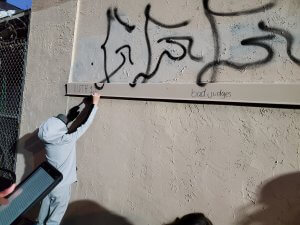We learned together for the first time in person this week! It was wonderful to see your amazing children in person. We practiced through our entire Torah service, and Nitzanim (3rd & 4th grade) got to see, too. Our Torah just came back from repairs with our soferet (scribe), so this was the first time it was read from after repairs. That whole experience was definitely the highlight of our week!
We all spent time looking over our readings. Feelings ranged from confident to a bit nervous. In the end we all did a really amazing job. Reading Torah was a new experience for some but rewarding for all.
Some reflections I heard:
- “Learning to chant Torah is stressful! We’ve been studying it for so long, and we have barely ever touched an actual Torah. I want to do it perfectly”
- “What does this letter have to be so long for?
- Couldn’t we just put some more words on this line?”
It was one experience to read from our Tikkun pages online, but to have the Torah in front of you makes it feel so very real.

One student, after reading the term yad mitzrayim (the hand of Egypt) commented “God took us out of Egypt by hand? That sounds tedious!” This realization was as they stepped away from reading Torah for the first time. Reading Torah gives us these unique insights and access to Torah.
We had a post Torah service discussion, breaking down pieces of the Parsha we’ve been spending all this time with.
Other reflections on Parshat Yitro:
- “Delegate tasks! You need to have other people helping you or you won’t be able to do it” We talked for a moment about how human it feels to see Moses getting this kind of advice.
- “Yitro has a lot of experience as a leader,” said one student “he is using what he knows to help Moses in a situation he’s probably been in himself.
- “It’s sort of weird, the way parts of this story are laid out. We don’t hear from other characters at all like Tziporah, or really any of the other characters!” We briefly chatted as a group about the way that we can think of these stories as the most important info.
Our Torah service ended, but we were not done!. After some celebratory hot cocoa we learned all about Petichta , the Midrashic process of mapping connections throughout the Torah. We figured if we were already in person we might as well really map it!

We took to the walls with some washable markers (and do not worry- it was washed) and mapped out Ester Rabbah Petichta 1:10- making connections from the first line of Ruth down through the sins of the judges and back to the beginning again. As we saw more pieces of text come in, the line and the message it contained gained richness and context. Methods like this keep us connecting Torah we’ve learned along the way to Torah we’re learning today.
